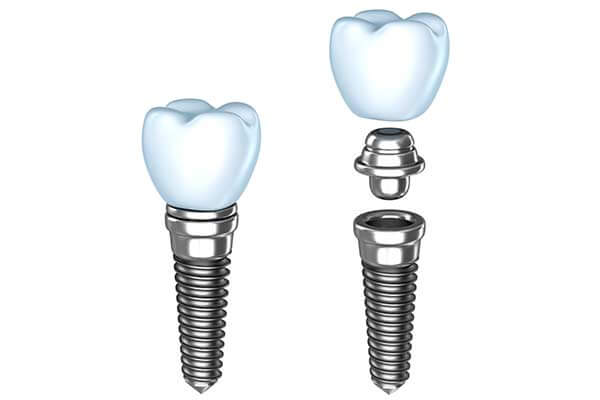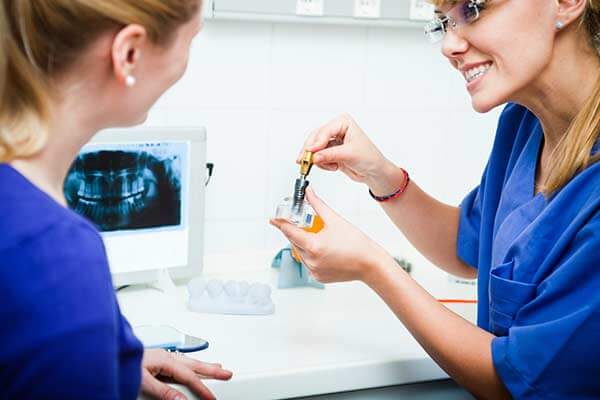Oral Surgery Procedures
Dental Implants

Dental implants are used to replace tooth roots. Implants provide a strong foundation for fixed or removable replacement teeth. Dental implants are small anchors made of biocompatible metal, called titanium, placed in the jawbone. The anchors begin to fuse with the bone over a few months. After the fusing process, known as osseointegration, abutment posts are inserted into the anchors to allow for the attachment of the replacement teeth. To fabricate the replacement teeth, an impression is taken and a model of the bite is created. The replacement teeth are based on this model. Replacement teeth can either be crowns, bridges or dentures.
Wisdom Tooth Removal (3rd Molars)

A wisdom tooth that is deemed problematic is normally extracted to avoid any oral complications. To have a wisdom tooth removed, a small incision is made to open up the gum tissue over the tooth and remove any bone that is covering the tooth. Once the tooth is in view, it is grasped with a dental instrument, known as a forcep, and gently rocked back and forth to loosen it from the jaw bone and surrounding ligaments. Sometimes the tooth may need to be cut into smaller pieces to make it easier for removal. Stitches may be necessary after the removal of a wisdom tooth.
Exposure and Bracketing

In most cases there is normal eruption of adult or secondary teeth, when primary teeth (baby teeth) are lost. Occasionally, an adult tooth has insufficient room to erupt into the mouth or may form at an angle that does not allow it to erupt properly. When this occurs the tooth is said to be impacted. The teeth that most commonly become impacted are the third molars (wisdom teeth). The treatment for impacted wisdom teeth is usually removal. However, other teeth in the mouth, which are more important to oral function, can also become impacted. Of these teeth the most common are the upper canines (“eye” teeth). To save these teeth and bring them into a normal position in the mouth, we can work in conjunction with your orthodontist to expose the teeth and slowly guide them into position.
The procedure is done by making a small incision to uncover the impacted tooth. An orthodontic bracket is then bonded to the tooth and a gold or elastic chain is attached to the bracket. The orthodontist will attach the chain to the existing orthodontic wire and will intermittently tighten it to guide the impacted tooth into the mouth. Recovery from this procedure is usually uneventful with mild discomfort and swelling.
